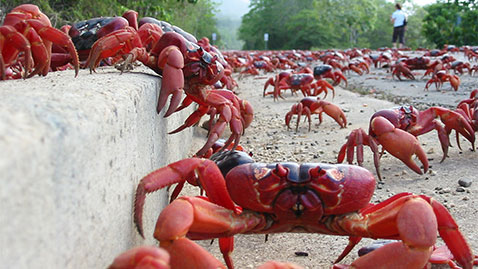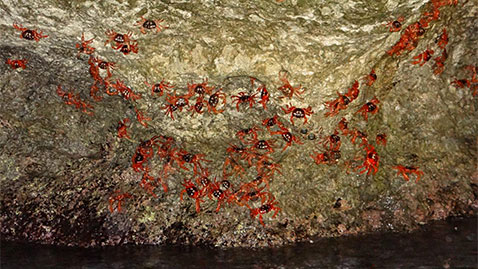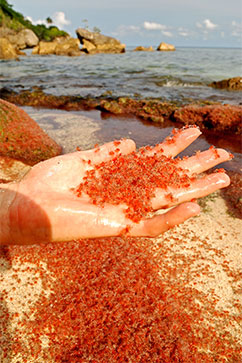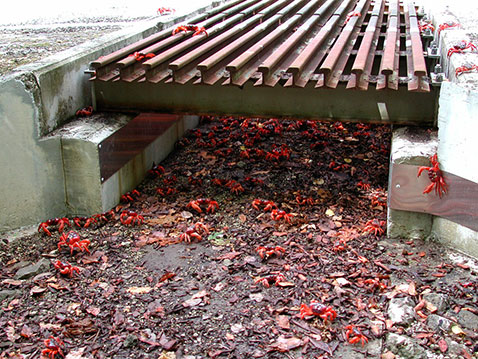Crustacean Invasion! Millions of Red Crabs Move Onto Christmas Island

Photo of a previous migration. Credit: Di Masters
Millions upon millions of red crabs on Australia's Christmas Island are shutting down roads, covering beaches and stopping people in their tracks.
But to the locals who live there, coming across a sea of red crabs heading for the coast at the end of November is nothing out of the ordinary.
According to the Australian National Parks department's latest surveys, around 45 million red crabs, made up of 14 different species, live on the tiny island, located roughly 500 miles off the coast of Indonesia.
Each year, adult red crabs, which can also look orange or, rarely, purple in color, migrate from the island's lush forests to the Indian Ocean for breeding.
Christmas Island National Park Chief Ranger Rob Muller snapped these photos early Thursday morning.

Credit: Parks Australia

Credit: Parks Australia
"Yesterday morning at 4.00 am we headed up north to see what was happening - but there were very few crabs spawning. Yesterday afternoon locals reported a number of crabs lining up on the cliffs and early this morning we were delighted to find a good number of females depositing their eggs," Muller said in an email to ABCNews.com.
The annual migration, which is a big tourist attraction for the island, will only occur if conditions are right during the region's wet season, according to Australia's National Parks department. If the rains stop or weaken, the crabs will delay their migration.

Baby crabs in hand. Credit: Justin Gilligan

Credit: Linda Cash
The National Parks department said the crabs' breeding timetable is fixed around the phases of the moon. Spawning typically occurs in November and December, but has been known to happen during the last lunar quarter in October.
Locals and national park staff build culverts to help the red crabs migrate, and will clear crab-filled roads with rakes to avoid running them over with cars or bikes.
To follow the current status of the migration, visit Australia's National Parks blog HERE.

Credit: Parks Australia